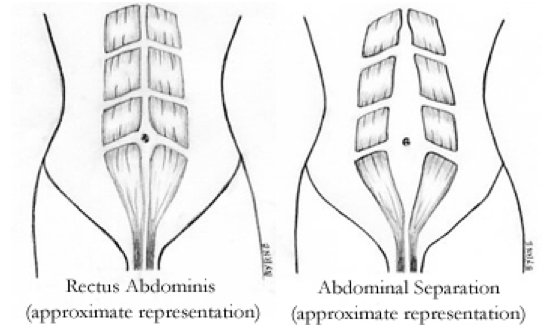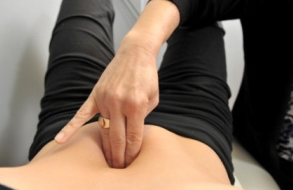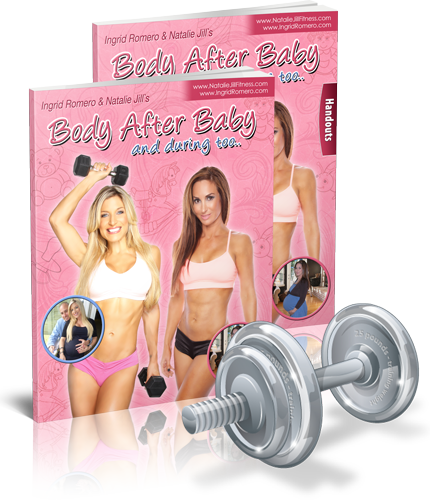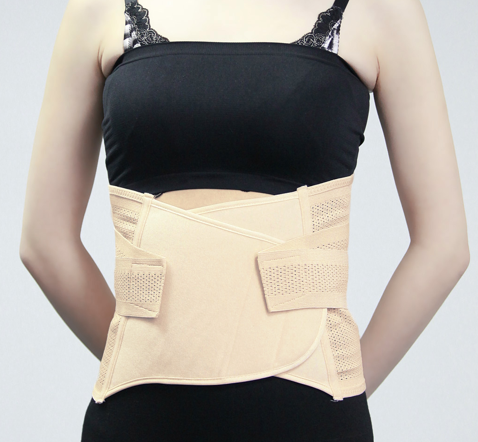03 Oct All About Abdominal Separation and Diastasis Recti
My abs seem separated? Could it be diastasis recti?
Have you ever wondered what actually happens to a woman’s abdominal muscles after having a baby? Are you pregnant right now and a little concerned about what might happen to yours? Well, we all know that a woman’s body HAS to stretch during pregnancy to accommodate a growing baby.
Learning from experience
Having my daughter personally exposed me to this entire process, as well as a LOT of misinformation! In one of my eBooks Body After Baby…and during too! I addresses nutrition and exercise both during and after pregnancy, and I genuinely encourage you to check it out or pass it along to anyone who you think could use it.
Diastasis Recti
For now, I want to focus on the pregnant/postpartum abdominal muscles and in particular, the challenges of dealing with diastasis recti. Diastasis recti refers to a condition where the right and the left halves of the Rectus abdominus muscles have spread apart at the mid-line of the body called the linea alba.
 Now every pregnancy involves a certain degree of separation in this area. After childbirth, a woman might feel something like a “hole” in the midline of her belly, and that’s just due to the muscles needing time to naturally retract and come back together, which in most cases, they do! The linea alba regains its elasticity and thickness, and there are absolutely no issues. But then there are those women who write to me trying to figure out why they feel a “gap” in their belly when they do crunches (a terrible core exercise!) or they say that they have a small pooch or mound protruding from their mid line. THESE are the women I need to help RIGHT NOW!
Now every pregnancy involves a certain degree of separation in this area. After childbirth, a woman might feel something like a “hole” in the midline of her belly, and that’s just due to the muscles needing time to naturally retract and come back together, which in most cases, they do! The linea alba regains its elasticity and thickness, and there are absolutely no issues. But then there are those women who write to me trying to figure out why they feel a “gap” in their belly when they do crunches (a terrible core exercise!) or they say that they have a small pooch or mound protruding from their mid line. THESE are the women I need to help RIGHT NOW!
Do you actually have abdominal separation? How to find out!
So the first step is obviously finding out if you HAVE diastasis recti. Here’s what I want you to do:
- Lay on your back and raise your knees, keeping your feet on the floor.
- Place your little finger in your belly button and your three middle fingers in a straight line towards your breastbone along the center of your abdominal cavity.
- Keeping your feet on the floor, perform a light crunch (chin to the chest, head and shoulders off the floor). You have to engage the abdominals, which means bringing your rib cage closer to your pelvis.
 At this point, you may now feel a gap between your abdominal muscles. You’ll now need to measure how many finger widths extend across the gap (i.e. “I have a 2 finger gap”).
At this point, you may now feel a gap between your abdominal muscles. You’ll now need to measure how many finger widths extend across the gap (i.e. “I have a 2 finger gap”).- If your gap is MORE than 2 to 2.5 fingers wide, you must be cautious of abdominal exercises. You’re very limited in what you can or should do.
- If your gap is SIGNIFICANTLY MORE than 2 to 2.5 fingers wide, you MUST consult your physician before engaging in any exercise, especially any core work.
A couple of things you should know about diastasis recti
First, diastasis recti does not always cause irreparable damage to your abdomen and it shouldn’t be causing you any pain. It also doesn’t automatically require surgical repair, which is often a common misconception.
What it DOES mean is that the functional strength of your abdominal wall is compromised, so your abdominal “seat belt” doesn’t really work. Abdominal instability can lead to pelvic instability, which then can cause back pain and pelvic pain and an overall weakened core.
Diastasis recti also means that traditional core exercises may not be appropriate for you and/or may aggravate the problem even further. That’s why I’m personally addressing the issue, because as you know, developing and maintaining core strength through appropriate movements is integral to every single one of my programs.
Every prenatal and postnatal exercise program should absolutely include exercises that help strengthen the transverse abdominus. The transverse abdominus is your deepest abdominal muscle, and is that “seat belt” (or “girdle”) that I referenced above. The transverse abdominus is also the primary abdominal muscle used during childbirth, so not only will strengthening it help prevent diastasis recti, it will help once the job of childbirth arrives!
Prenatal and Postnatal Workouts
Prenatal and postnatal workouts SHOULD AVOID exercises that flex the upper spine off the floor such as traditional crunches, oblique crunches and bicycles, exercises that stretch and place pressure on the abdominals such as laying backwards over a balance ball or any type of backbend, and any exercise that forces you to push out against your abdominal wall.
Prenatal and postnatal workouts SHOULD INCLUDE exercises that require an internal pulling of the abdominal muscles in and together (“knitting” them together) and holding the position for 20-30 seconds. The transverse pull-in is just that, and can be done prone on the floor or standing up against a wall.
Other appropriate exercises both during pregnancy and during recovery from childbirth include the heel slide and the pelvic tilt, as well as small moves that challenge balance, such as simply standing on a Bosu ball.
 More diastasis recti PREVENTION Tips
More diastasis recti PREVENTION Tips
Body After Baby provides 10 phenomenal core exercises that are safe and effective for every new and expecting mom.
Additionally, compression from a postnatal “belly belt” or from “belly binding” has been shown to be incredibly effective in supporting new moms in their efforts to regain a strong core. You should know that there are definitely a lot of binding methods and options available, so the most important step is to talk to your physician and do your research!
The Wrap-Up…
 My point in all of this is that diastasis recti is a condition that many new moms can help prevent, and once it exists, many new moms can take steps to solve the problem. What many new and misinformed moms end up doing is making thing worse because they do not know about it, how to diagnose it, or even understand it. What happens is that they end up aggressively pursuing a re-strengthening program for their core with ALL of the wrong moves which only serve to make the problem worse. Take some time to become more informed, and let me help you get on your way to some fabulous post-baby abdominals!
My point in all of this is that diastasis recti is a condition that many new moms can help prevent, and once it exists, many new moms can take steps to solve the problem. What many new and misinformed moms end up doing is making thing worse because they do not know about it, how to diagnose it, or even understand it. What happens is that they end up aggressively pursuing a re-strengthening program for their core with ALL of the wrong moves which only serve to make the problem worse. Take some time to become more informed, and let me help you get on your way to some fabulous post-baby abdominals!
Excuses or Solutions, You Decide!
– Natalie Jill
Whether you’re pregnant or not, give me 7 days to teach you the habits that will change your life forever! Get your 7 Day Jump Start HERE.
